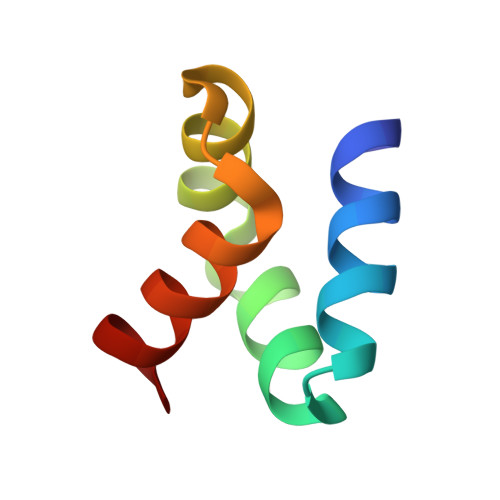Flowering Poration-A Synergistic Multi-Mode Antibacterial Mechanism by a Bacteriocin Fold.
Hammond, K., Lewis, H., Halliwell, S., Desriac, F., Nardone, B., Ravi, J., Hoogenboom, B.W., Upton, M., Derrick, J.P., Ryadnov, M.G.(2020) iScience 23: 101423-101423
- PubMed: 32795916
- DOI: https://doi.org/10.1016/j.isci.2020.101423
- Primary Citation of Related Structures:
6SIF, 6SIG - PubMed Abstract:
Bacteriocins are a distinct family of antimicrobial proteins postulated to porate bacterial membranes. However, direct experimental evidence of pore formation by these proteins is lacking. Here we report a multi-mode poration mechanism induced by four-helix bacteriocins, epidermicin NI01 and aureocin A53. Using a combination of crystallography, spectroscopy, bioassays, and nanoscale imaging, we established that individual two-helix segments of epidermicin retain antibacterial activity but each of these segments adopts a particular poration mode. In the intact protein these segments act synergistically to balance out antibacterial and hemolytic activities. The study sets a precedent of multi-mode membrane disruption advancing the current understanding of structure-activity relationships in pore-forming proteins.
Organizational Affiliation:
National Physical Laboratory, Hampton Road, Teddington TW11 0LW, UK; London Centre for Nanotechnology, University College London, London WC1H 0AH, UK; Department of Physics & Astronomy, University College London, London WC1E 6BT, UK.















